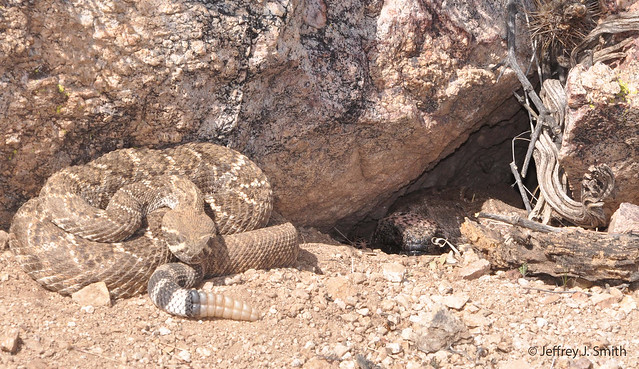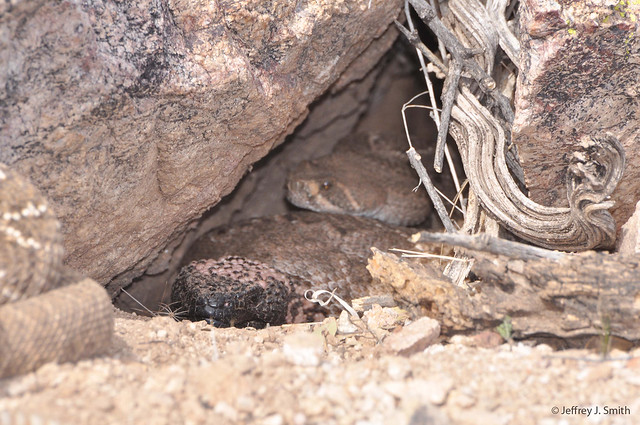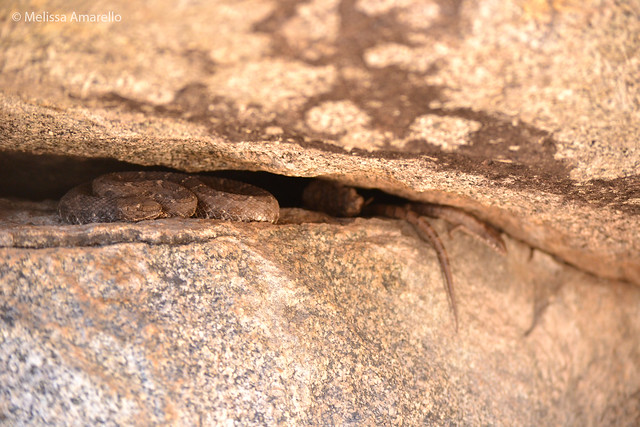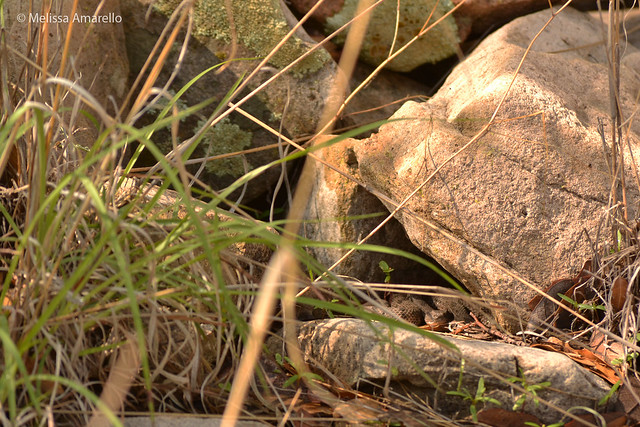Ever since we saw Roger Repp's talk at the Tucson Herpetological Society, Burrow Buddies — or Not?, we've been fascinated by different reptile species sharing shelter sites. Multiple species often share the same overwintering site; we shared this fun example here back in April:
At one of our new dens at Muleshoe Ranch, we have seen western diamond-backed rattlesnakes, spiny lizards, Gila monsters, coral snakes, patch-nosed snakes, earless lizards,
Arizona black rattlesnakes,
and Sonoran whipsnakes (cruising by while an Arizona black rattlesnake sits at the right side of the den opening).
We've also seen western diamond-backed rattlesnakes and Gila monsters sharing den sites elsewhere:
And, lizards that would be prey for rattlesnakes during the active season also share den sites with their potential predators:
But what about during the active season?
There are probably chance encounters like this:
 A black-tailed rattlesnake cruises by a resting Arizona black rattlesnake (Boyett).
A black-tailed rattlesnake cruises by a resting Arizona black rattlesnake (Boyett).Jaydin, a black-tailed rattlesnake we are radio-tracking at Muleshoe Ranch, spent a couple weeks shedding his skin in a particular rockpile earlier this summer. Last week we happened to be walking by that rockpile and even though we knew Jaydin was long gone, we looked underneath to see if anyone else was using it:
Sure enough, there was a juvenile western diamond-backed rattlesnake resting under the rock. For whatever reasons, these shelter sites serve the needs of different individuals of different species. In this case the visits by the black-tailed and western diamond-backed rattlesnakes were weeks apart, but what if they needed to use the rock at the same time?
A few days ago, a friend took us out to visit some rattlesnake nests. We stopped at a site that was being used this year by Sunny, a pregnant ridge-nosed rattlesnake, but found this little guy instead:
Where was Sunny? Did she move to a new nest site? Was she resting behind the rock rattlesnake? In more than 20 years of studying ridge-nosed and rock rattlesnakes, our friend has never seen them intermingle, despite the fact that these species are often found in the same habitat. After an unsuccessful check of other sites Sunny has used, we left to visit some other rattlesnake nests. We returned to Sunny's nest a while later and were greeted with this surprise:
Um, wow! What is going on here? Is this just coincidence or could they be interacting in a mutually beneficial way?
Through careful observation and using time-lapse cameras, we are seeing more examples of different species sharing sites. This is the first time we have heard of or seen two different snake species coiled together like this. If you have, we would love to hear about it in the comments section below - please share!



























